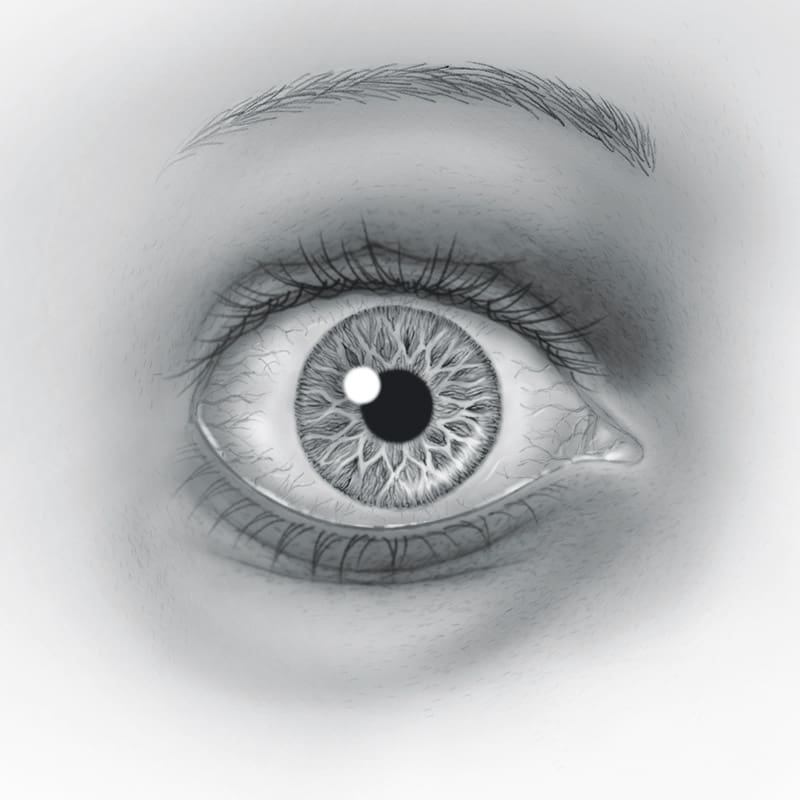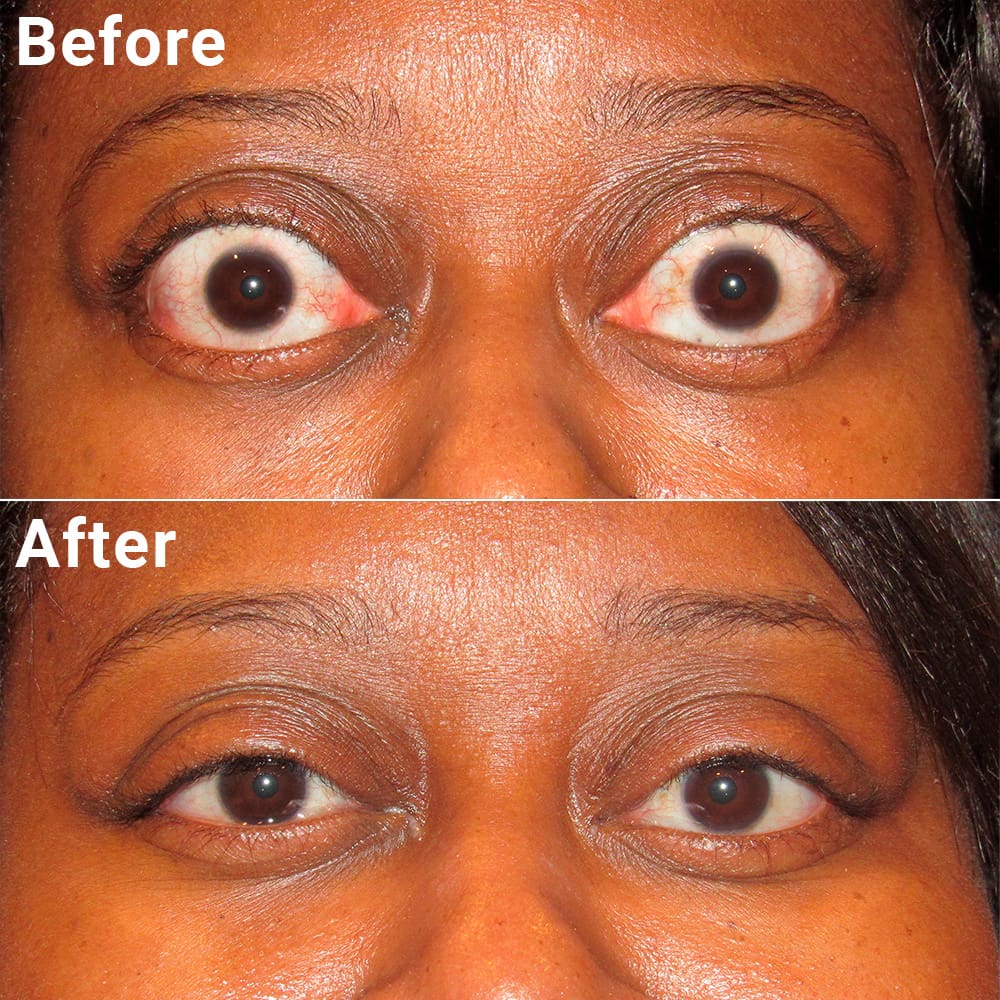Thyroid Eye Disease
What Is It?
Thyroid eye disease (also called Graves’ eye disease or thyroid orbitopathy) is an autoimmune condition. That means your immune system — normally your body’s defense — starts attacking healthy tissue around the eyes. This leads to inflammation, swelling, and bulging of the eyes.
It often happens in people with thyroid problems, like Graves’ disease or hyperthyroidism, but can also occur in people with no thyroid issues. It affects people differently.

Common Symptoms
• Bulging eyes
• Redness, irritation, or tearing
• Swelling around the eyes
• Pain or pressure behind the eyes
• Double vision or limited eye movement
• Eyelid retraction (upper lid pulled too high)
• Light sensitivity
• Vision changes or loss (in severe cases)
Phases of the Disease
Thyroid eye disease has two phases:
1. Active (Inflammatory) Phase
Lasts 6 months to 2 years. Symptoms are more intense and may change over time.
2. Stable Phase
Inflammation settles. Some issues may improve, while others — like eye bulging or double vision — can remain.
Treatment Options
In the Active Phase
• Lubricating eye drops
• Wrap-around sunglasses
• Sleeping with the head elevated
• Anti-inflammatory medications or steroids
• Newer medications that may reduce swelling and bulging
• Rarely, surgery if vision is threatened
In the Stable Phase
If symptoms don’t go away, surgery may help improve function and appearance:
Step 1: Orbital decompression
Removes bone or fat behind the eye to relieve pressure and reduce bulging.
Step 2: Eye muscle surgery
Repositions muscles to correct double vision (usually by a strabismus specialist).
Step 3: Eyelid surgery
Adjusts eyelid position to protect the eye and improve appearance.
Not every patient needs all three steps but if they do, they are generally in this order since each step can affect the next one.
Risks and Considerations
Surgery is usually safe, but all procedures carry some risks:
• Swelling and bruising (temporary)
• Bleeding, infection, or scarring (uncommon)
• Changes in eyelid position, double vision, or vision
• Possible need for additional treatment
Let your doctor know if you take blood thinners, as they may increase bleeding risk.
Every patient is different. Your oculofacial plastic surgeon will guide you through treatment options and help you decide what’s best for your case.
Summary
Thyroid eye disease can cause vision changes and affect how your eyes look and feel. With careful monitoring and the right treatments, most people find relief and improvement in both function and appearance.

